The Buffalo Wallow fight is a little-known event taking place on September 12, 1874. It was part of the new Red River War devised by General Ranald McKenzie to use five different columns of troops from different forts to squeeze the tribes onto reservations who had either never been on reservations or had left them.
Part of the pincer movement involved a rival, General Nelson Miles, who had been encamped on the Red River, but who had decided to move north. Part of his movement required informing the supply train on the way from Camp Supply in Oklahoma to the Red River that he was going to move his encampment further north.
Initially, he sent a trusted scout, Billy Dixon, along with another scout Amos Chapman, to meet the train and redirect it. They took four soldiers with them, thinking that the fewer they had in the task, the easier they would be to move without being detected. The Comanche used scouts to spy on larger columns of troops, always keeping them in sight. By having a small troop, they could move about without detection.
The supply train, led by Captain Wyllys Lyman, was at that time surrounded by Kiowas led by Lone Wolf and probably Satanta, both of whom were ultimately engaged by McKenzie in the Palo Duro Canyon later in the year.
In those days it was not uncommon for Kiowas to cooperate with Comanche, Cheyenne and Kiowa-Apache for hunting, raiding and common defense and there were probably some of each in the larger movement from the reservations in Oklahoma to the Palo Duro Canyon.
The Kiowa engaged the supply train on September 10th and laid siege to it for two days before they started to move off in the early morning hours of the 12th. While some of them left, more remained at the supply train. A few of those ran across the six men in Billy Dixon’s group. While the five others took defensive positions, they left Pvt. Smith to hold the horses. The Kiowa warriors shot Smith right away and the horses scattered, taking the Dixon group’s ammunition, water, food and clothing with them.
Seeing that they were in bad shape as the few Kiowa who engaged them were bolstered by more warriors arriving, Dixon spied a buffalo wallow about a hundred yards away. They ran to the little cover that it provided, except for Amos Chapman, who was shot in the leg on his way there.
Immediately, some of them started digging with their knives to deepen the wallow while others covered them with rifle fire. Occasionally, the warriors would charge the wallow, but were pushed back by the rifle fire.
Billy Dixon, for his part was a buffalo hunter who had been at Adobe Walls when it was attacked by a group of Comanches led by Quanah Parker and his medicine man Isa Tai. Isa Tai had convinced the warriors with Parker that they could not be killed by white man’s bullets. That was a mistake, because of the 28 buffalo hunters there at the time. These were men accustomed to engagements with Comanche, Kiowa and Cheyenne warriors, who were excellent long distance shooters. Also at the second battle of Adobe Walls was Bat Masterson.
Billy Dixon was well known as an incredibly accurate shooter even at extreme long ranges. At the end of the Second battle of Adobe Walls a group of Comanche were on a ridge nearly a mile away, comfortable they were far out of range. With the greater danger past, they challenged Dixon to take a shot. He sighted in his rifle, squeezed the trigger and thought he had missed until the warrior he’d aimed at toppled off of his horse and scattered the remainder of the warriors.
Back at the buffalo wallow, they dug and dug and threw the soil up around the top to give them more cover. They were already low on ammunition, with no supplies to count on. They carefully took aim and shot only when the likelihood of success was great. Amos Chapman was still lying there halfway between where Smith had died and the buffalo wallow. Dixon decided somewhere over the next hour to go and bring him in. When there was a lull in the fighting he got up out of the wallow and rushed to Chapman. He was able to carry him back with bullets kicking up dust all around and even some puncturing his loose-fitting shirt.
The five in the wallow, and why I sometimes forget that there were actually six men, comes from the fact that Smith was out of the fight immediately and remained where he had dropped without moving a muscle. It was decided that as their ammunition was rapidly disappearing that Smith had a full supply.
Private Rath was sent to get Smith’s weapon and ammunition and bring it back to the wallow. When he discovered that Smith was still alive, Dixon ran to the spot and helped Rath bring Smith to the wallow. They set him against the wall, to give the impression that he was a viable fighter, though the wounds suggested he was barely alive. A more cynical person might think that he was set against the wall as a target that would draw the enemy fire away from those who could fight back.
Without water, ammunition or food, the men were getting quite uncomfortable. By three in the afternoon, a thunderstorm rose up that was recorded by those with the Lyman supply train, Dixon’s group and Major Price’s troops on their way to find and relieve the supply train. It was a godsend and they drank water from the bottom of the wallow, easing that concern, at least, but a Norther followed directly behind and dropped the temperatures significantly, the missing clothes left them little to protect them.
By now, there were close to 125 warriors in and around the wallow as their women and children passed somewhere out of sight on their way to the Palo Duro Canyon.
From the very first, all of the men were wounded, Dixon, the least of all. They were freezing, low on ammunition and Smith would die sometime in the night. They sustained several charges from the Kiowa, but repulsed them each time. They circled them and tried to eliminate the threat, ultimately, though they succeeded in getting the women and children past the group.
There was no doubt in Dixon’s mind that had they wanted to kill them, they could have been easily wiped out. It was only the deadly aim they had been able to exhibit and the ultimate goal of pinning them down so as not to discover the larger movement of women and children that saved their lives.
At the same time, the advance warriors engaged Major Price coming from Fort Wingate, NM, under orders of Nelson Miles to locate and escort the supply train. They successfully protected the women and children and Price continued on his way.
Price eventually encountered Dixon and his men on the way, all wounded, one dead, hungry, cold, nearly out of ammunition and thirsty. Price refused to give them any comfort, though some of his men offered food and water as they passed by. This is how they were found when the supply train finally arrived.
When Nelson Miles heard of it he castigated Price quite heavily and pinned the Medal of Honor on Dixon himself. The others had to wait until more medals could be obtained. All six men were awarded the medal of honor, though Dixon and Chapman’s medals were rescinded, because they were civilian scouts and not enlisted. The medals were eventually restored, but Dixon kept the letter Miles had written and refused to give up the medal when requested.
The remarkable irony of this story is having survived the Second Battle of Adobe Walls, Dixon had decided that roaming the plains as a buffalo hunter was too dangerous, because the Adobe Walls had been attacked in revenge against the buffalo hunters decimating the buffalo the tribes relied on for food, clothing and shelter. Dixon figured, it would be safer to act as a scout for General Miles. He remained a scout until he retired in 1883.
Billy Dixon is a fascinating character of the old west and I intend to write something on him specifically in the future.
If you love coffee there’s a Substack called Panhandle Sunrise and I thought some of you might enjoy it. It’s run by my daughter (former barista), but she doesn’t sell coffee, she just talks about the different kinds she likes. It’s free.
Twelveround.com is still the home of quality fiction. If Westerns aren’t your thing, Rebel and Rogue are more modern (1970s). If you look to the right of the green box on the Amazon page, there are paperback editions of both of them available. If you don’t want to buy from Amazon, you can get the physical novels from Twelveround. Read the reviews of those who have commented on Amazon to get a feel for what’s in store.







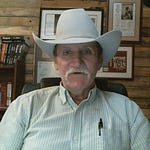

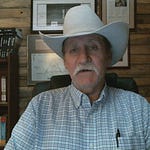

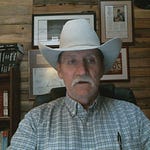

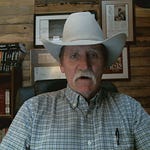



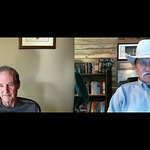
Buffalo Wallow Fight